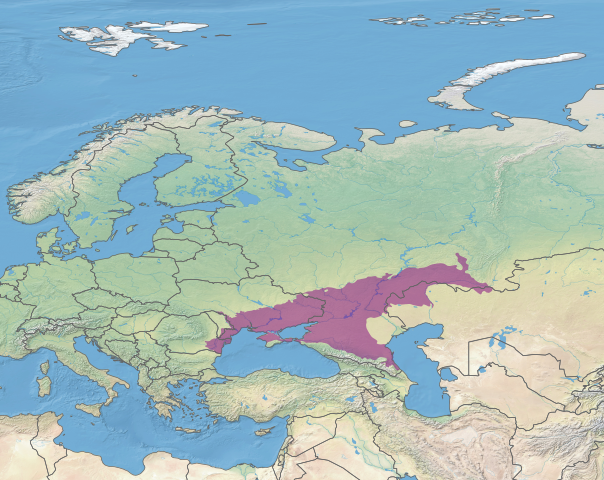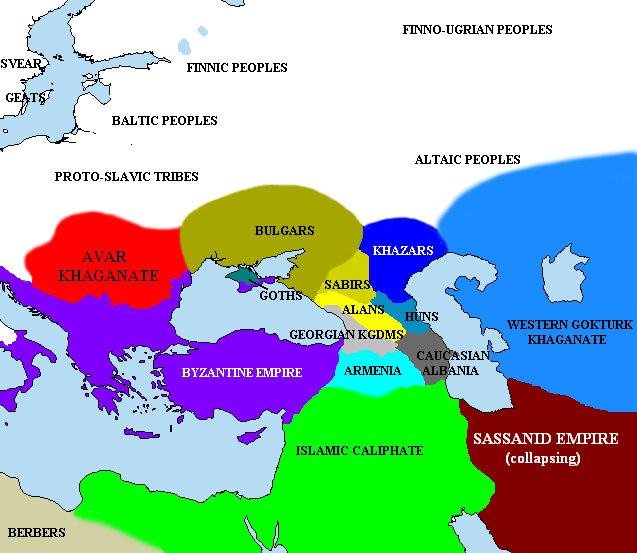
| PONTIC - CASPIAN STEPPE
The steppe in Azov-Syvash National Nature Park, Ukraine, with reintroduced horses
The steppe extends roughly from the Danube to the Ural River Realm : Palearctic
Biome
: Temperate grasslands, savannas, and shrublands
Streltsovskaya Steppe, a preserved area in Milove Raion in Luhansk Oblast, Ukraine. The steppe is often dominated by plumes of Stipa in early summer
Tulip suaveolens is one of the most typical spring flowers of the Pontic-Caspian steppe The Pontic steppe or Pontic–Caspian steppe is the steppeland stretching from the northern shores of the Black Sea (called Euxeinos Pontos in antiquity) as far east as the Caspian Sea, from Dobruja in the northeastern corner of Bulgaria and southeastern Romania, through Moldova and eastern Ukraine across Russian Northern Caucasus, Southern and lower Volga regions to western Kazakhstan, adjacent to the Kazakh steppe to the east, both forming part of the larger Eurasian steppe. It is a part of the Palearctic realm and the temperate grasslands, savannas, and shrublands biome.
The area corresponds to Cimmeria, Scythia, and Sarmatia of classical antiquity. Across several millennia the steppe was used by numerous tribes of nomadic horsemen, many of which went on to conquer lands in the settled regions of Europe, Western Asia, and Southern Asia.
The term Ponto-Caspian region is used in biogeography of the flora and fauna of these steppes, including animals from the Black Sea, Caspian Sea, and Azov Sea. Genetic research has identified this region as the most probable place where horses were first domesticated.
According to the most prevalent theory in Indo-European studies called the Kurgan hypothesis, the Pontic–Caspian steppe was the homeland of the speakers of the Proto-Indo-European language.
Geography
and ecology :
To the south, the Pontic steppe extends to the Black Sea, except the Crimean and western Caucasus mountains' border with the sea, where the Crimean Submediterranean forest complex defines the southern edge of the steppes. The steppe extends to the western shore of the Caspian Sea in the Dagestan region of Russia, but the drier Caspian lowland desert lies between the Pontic steppe and the northwestern and northern shores of the Caspian. The Kazakh Steppe bounds the Pontic steppe to the east.
The Ponto-Caspian seas are the remains of the Turgai Sea, an extension of the Paratethys which extended south and east of the Urals and covering much of today's West Siberian Plain in the Mesozoic and Cenozoic.
Prehistoric
cultures :
The Pontic steppe in c. 650
Zaporozhian Cossacks fighting Tatars from the Crimean Khanate—late 19th-century painting Source :
https://en.wikipedia.org |





